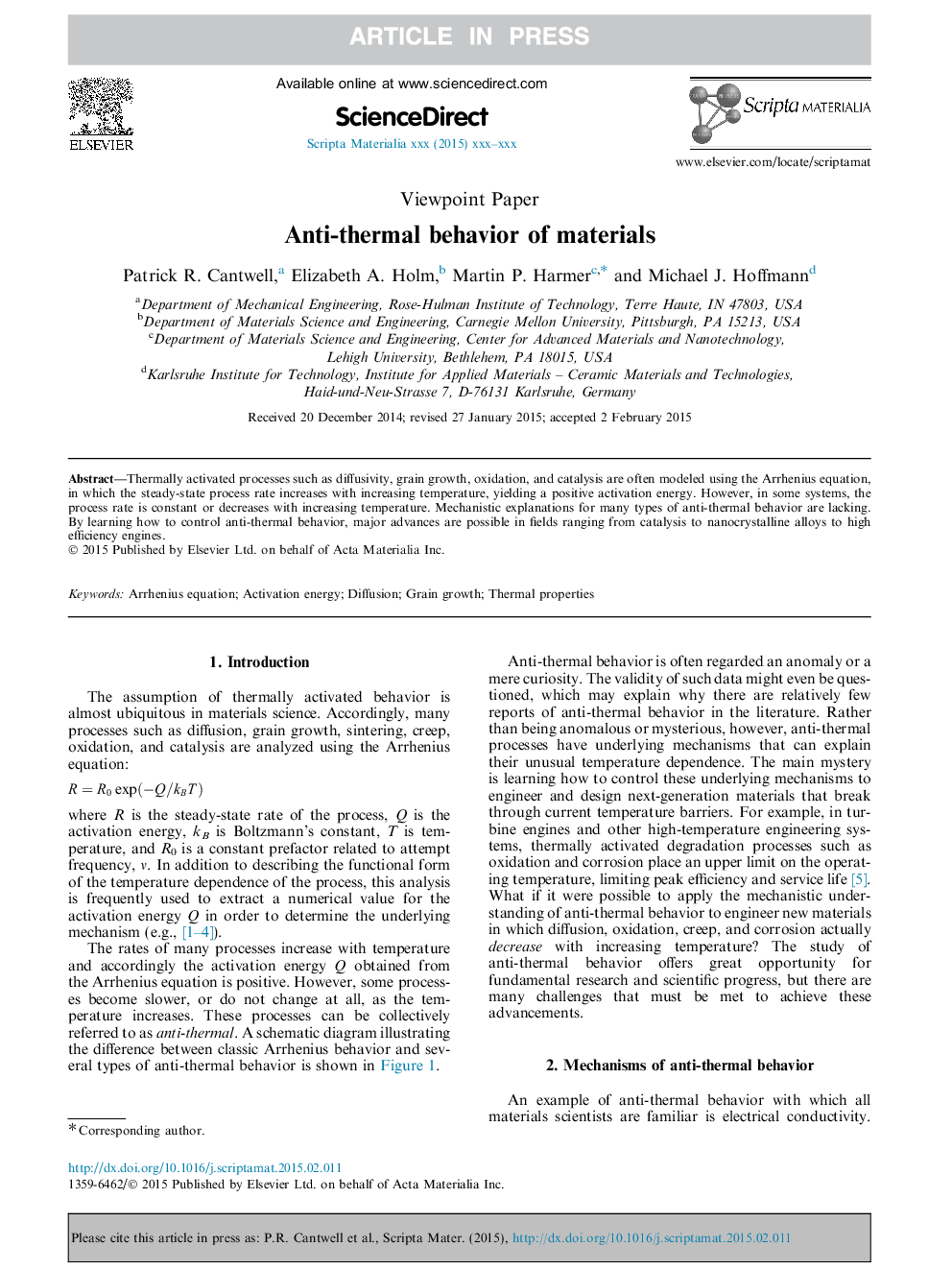| Article ID | Journal | Published Year | Pages | File Type |
|---|---|---|---|---|
| 7912972 | Scripta Materialia | 2015 | 5 Pages |
Abstract
Thermally activated processes such as diffusivity, grain growth, oxidation, and catalysis are often modeled using the Arrhenius equation, in which the steady-state process rate increases with increasing temperature, yielding a positive activation energy. However, in some systems, the process rate is constant or decreases with increasing temperature. Mechanistic explanations for many types of anti-thermal behavior are lacking. By learning how to control anti-thermal behavior, major advances are possible in fields ranging from catalysis to nanocrystalline alloys to high efficiency engines.
Related Topics
Physical Sciences and Engineering
Materials Science
Ceramics and Composites
Authors
Patrick R. Cantwell, Elizabeth A. Holm, Martin P. Harmer, Michael J. Hoffmann,
